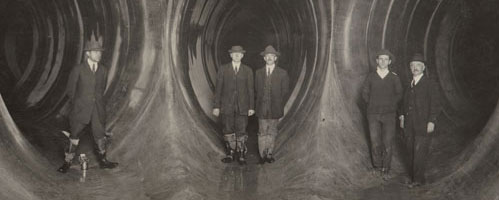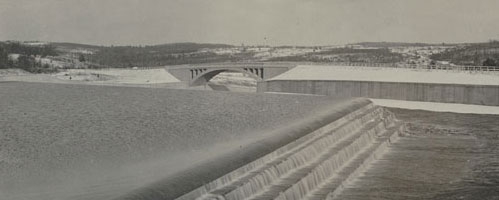History of NYC’s Drinking Water
Quenching the City’s Thirst In the early 1600s, the first residents of what was then known as New Amsterdam got their water from springs, streams, and ponds. As their numbers grew, the City’s early inhabitants began digging shallow private wells and in the 1670s, the first public well was dug in front of the old fort at Bowling Green. By the mid-18th century, water from a reservoir on Chambers Street (dug by the Manhattan Company, which would become Chase Manhattan Bank) was distributed through wooden mains laid in the principal streets. At this time, waste drained into open gutters, contaminating the City’s water supply and contributing to yellow fever and cholera epidemics that plagued the City into the beginning of the 19th century. The City needed desperately to increase its supply of clean water. In the 1830s, the City impounded water from the Croton River in what is now Westchester County and began construction of an aqueduct, which, when put into service in 1842, delivered about 90 million gallons of fresh water a day. A number of distribution reservoirs located in Manhattan helped to increase supplies, but demand continued to grow along with the City’s population. By the late 1800s, a new aqueduct was under construction to get yet more water from Croton to the City. And by this time, with the population at more than three million people, the City’s newly consolidated Water System – encompassing Manhattan, the Bronx, Brooklyn, Queens, and State Island – was focused on finding new sources of water. In 1905, the State Legislature established the Board of Water Supply, which, after careful study, identified the Catskill region as an additional water source. This Board planned and constructed facilities in four watersheds in what would come to be known as the Catskill System. This included the Ashokan Reservoir and Catskill Aqueduct, completed in 1915. The Schoharie Reservoir and Shandaken Tunnel were completed in 1928. Work next extended to the Rondout watershed and tributaries of the Delaware River in New York state. Initially, the state of New Jersey contested this project, seeking to prevent New York from using water from any Delaware River tributary. Finally approved, construction began in 1937 and the Delaware System was put into service in stages. The Delaware Aqueduct, the longest continuous tunnel in the world, was completed in 1944, Rondout Reservoir in 1950, Neversink Reservoir in 1954, Pepacton Reservoir in 1955, and Cannonsville Reservoir in 1964. The system that delivers NYC Water includes a network 19 reservoirs and three controlled lakes in a 1,972 square-mile watershed that extends across eight New York counties and Fairfield County, Connecticut. It has a total storage capacity of approximately 580 billion gallons. To minimize the effect of localized droughts and take advantage of excess water in any of the watersheds, the system was built with interconnections that permit the exchange of water from one to another. A true engineering marvel, the system relies on more than 6,200 miles of pipes, aqueducts, and tunnels to deliver water from source to user. Even more impressive, the system is almost entirely gravity driven, delivering high-quality water to consumers without emitting climate-changing greenhouse gases. Under Mayor Bloomberg’s PlaNYC initiative, the New York City Department of Environmental Protection is working to ensure the system’s long-term viability and sustainability. | ||




